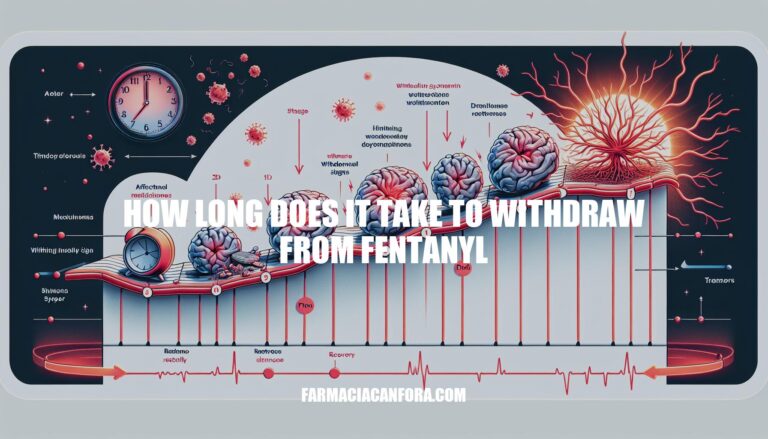


Fentanyl, a powerful synthetic opioid, is often prescribed for severe pain but can be highly addictive. Understanding the withdrawal process is crucial because it helps individuals prepare for the physical and emotional challenges they may face. Withdrawal symptoms can start within hours of the last dose and typically peak within a few days, but the entire process can last several weeks. Proper medical support can significantly ease this difficult journey, making it safer and more manageable.
Here are the key factors that can influence the duration of fentanyl withdrawal:
Dosage: Higher doses of fentanyl typically lead to more severe withdrawal symptoms and a longer withdrawal period.
Duration of Use: The longer someone has been using fentanyl, the more prolonged and intense the withdrawal process can be.
Frequency of Use: Frequent use can lead to greater physical dependence, resulting in a more challenging withdrawal.
Method of Administration: Methods that deliver fentanyl more quickly to the bloodstream, such as injection, can lead to more severe withdrawal symptoms.
Individual Health Conditions: Underlying physical and mental health conditions can complicate withdrawal. For example, individuals with anxiety or depression may experience heightened psychological symptoms during withdrawal.
Polysubstance Use: Using other substances alongside fentanyl, such as alcohol or other drugs, can exacerbate withdrawal symptoms and extend the duration.
Age: Older individuals may experience a slower metabolism, which can prolong the withdrawal process.
Each person’s experience with fentanyl withdrawal can vary significantly based on these factors. If you or someone you know is going through this, seeking medical support can make the process safer and more manageable.
Here’s a detailed timeline for fentanyl withdrawal:
Common symptoms of fentanyl withdrawal include:
Symptoms typically start within 8-24 hours, peak around 36-72 hours, and can last up to 10 days.
Medical assistance and detox programs play a crucial role in managing the withdrawal process by providing a safe and controlled environment. Here’s how they help:
These programs are essential for a safer and more comfortable withdrawal experience, paving the way for successful long-term recovery.
Fentanyl withdrawal can last several weeks, with symptoms starting within 8-24 hours after the last dose and peaking around 36-72 hours. The duration of withdrawal is influenced by factors such as dosage, duration of use, frequency of use, method of administration, individual health conditions, polysubstance use, and age.
Medical support can significantly ease this process, making it safer and more manageable. Common symptoms include muscle aches, anxiety, insomnia, diarrhea, vomiting, increased heart rate, and high blood pressure.
Medical assistance and detox programs provide symptom management, monitoring, supportive care, and can shorten the duration of withdrawal. Understanding how long it takes to withdraw from fentanyl is crucial for preparing individuals for the physical and emotional challenges they may face.